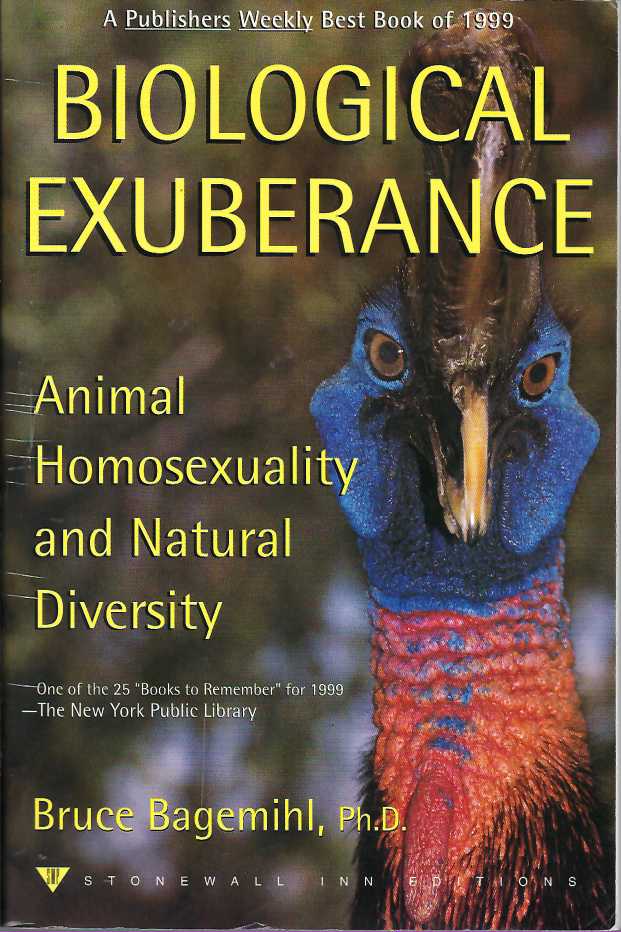Homosexuality in its myriad forms has been scientifically documented in more than 450 species of mammals, birds, reptiles, insects, and other animals worldwide. Biological Exuberance is the first comprehensive account of the subject, bringing together accurate, accessible, and non-sensationalized information. Drawing upon a rich body of zoological research spanning more than two centuries, Bruce Bagemihl shows that animals engage in all types of non-reproductive sexual behavior. Sexual and gender expression in the animal world displays exuberant variety, including same-sex courtship, pair-bonding, sex, and co-parenting—even instances of lifelong homosexual bonding in species that do not have lifelong heterosexual bonding.
Part 1, “A Polysexual, Polygendered World,” begins with a survey of homosexuality, transgender, and nonreproductive heterosexuality in animals and then delves into the broader implications of these findings, including a valuable perspective on human diversity. Bagemihl also examines the hidden assumptions behind the way biologists look at natural systems and suggests a fresh perspective based on the synthesis of contemporary scientific insights with traditional knowledge from indigenous cultures.
Part 2, “A Wondrous Bestiary,” profiles more than 190 species in which scientific observers have noted homosexual or transgender behavior. Each profile is a verbal and visual “snapshot” of one or more closely related bird or mammal species, containing all the documentation required to support the author’s often controversial conclusions.
Lavishly illustrated and meticulously researched, filled with fascinating facts and astonishing descriptions of animal behavior, Biological Exuberance is a landmark book that will change forever how we look at nature.
A scholarly, exhaustive, and utterly convincing refutation of the notion that human homosexuality is an aberration in nature. Biologist Bagemihl, who formerly taught cognitive science at the University of British Columbia, argues persuasively that our current understanding of biology and evolution is tainted by a heterosexually biased interpretation of animal behavior. He intends as his audience both a scientific and a general readership; he reaches both with his clear and straightforward presentation. Focusing primarily on mammals and birds, and citing only strictly documented case studies, he firmly establishes in part one of this work that homosexual and transgendered behaviors occur widely in the animal world. Bagemihl’s definition of homosexuality includes a diverse range of activities organized under five headings: courtship, affection, sex, pair-bonding, and parenting. He views the challenge before us now as the need to abandon a traditional point of view, whereby “same-sex activity is routinely described as being ‘forced’ on other animals” or is viewed as a substitute for heterosexual coupling that occurs only when no other (i.e., no heterosexual) mate can be found as the first choice of those concerned. A new understanding of animal relationships should therefore also recognize that not all animal sexual activity is aimed at reproduction—we must reconsider traditional explanations of the links between reproduction, evolution, and natural selection. Part two is organized as a thorough reference guide to homosexual behaviors in individual animals and birds, complete with extensive examples and rigorous footnotes. Bagemihl does realize that some among us will never be convinced that homosexuality occurs freely and frequently in nature. But his meticulously gathered, cogently delivered evidence will quash any arguments to the contrary.
pp. 768 illusts #090322
